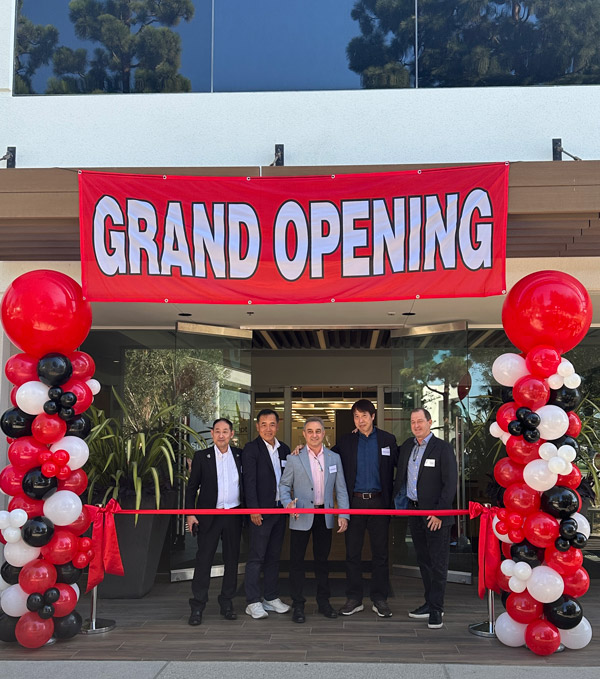Your Guide To Optical Coatings
What is an Optical Coating?
Also called a thin film coating, an optical coating can be one or many layers of material, applied to a substrate to change its properties and the way it interacts with light. A coating can be used to adjust the reflection, transmission, or absorption of light, depending on its wavelength. This allows for materials to be fine-tuned for specific applications.
Why Coat Optics?
Without an optical coating, lenses, and mirrors are limited by the properties of their material. Coatings optimize the amount of light transmitted or reflected, enhancing an optic without completely remaking it. For example, anti-reflection, or AR coatings, work by adjusting the angle of light before reaching the lens, so that the lens material will transmit the light, rather than reflect it. Similarly, high reflective, or HR coatings, bend light to an angle that the mirror will readily reflect, rather than transmit. These coatings add another level of customization to the optic to guarantee the best outcome.
Types of Optical Coatings:
Three main types of coatings are anti-reflection (AR) coatings, high reflective (HR) coatings, and filter coatings. Each of these may be achieved using a variety of materials in various combinations, including dielectric materials. Dielectric coatings are unique enough to sometimes show up as their own category, in addition to the other types of coatings. What makes them different is that dielectric coatings utilize optical interference to achieve near-perfect reflection or transmission, resulting in almost no absorption.
Anti-Reflection (AR) Coatings:
Anti-reflection, or AR coatings, are designed to decrease reflection, which conversely means an increase in transmission. AR coatings are typically used for lenses, and can also be used to reduce glare in applications such as photography, and even on windows for cars and other vehicles. Dielectric AR coatings utilize destructive interference in such a way that any beams of light that would be reflected effectively cancel out.
High Reflective (HR) Coatings:
High reflective, or HR coatings, are also known as mirror coatings, as this is the most recognizable application. Uncoated mirrors are limited by the reflectivity of the material, but adding a coating drastically increases the reflectivity of the mirror. Dielectric HR coatings utilize constructive interference, such that any beams of light that are reflected interact positively, resulting in a greater reflectivity.
Filter Coatings:
Filter coatings are specifically designed to transmit specific wavelengths while reflecting/absorbing other wavelengths. Filters can be divided into two categories absorptive and dichroic filters, which correspond to whether a filter absorbs or reflects light, respectively. Additionally, filters can be described as low pass optical filters, high pass optical filters, or bandwidth filters. Low pass filters are designed to allow transmission of a certain wavelength and lower, high pass filters transmit a certain wavelength and higher, and bandpass filters transmit a specific range of wavelengths while blocking everything else.
Coating Technology:
Common methods for coating optics includes thermal evaporation, electron beam (E-beam) deposition, ion-assisted E-beam deposition (IAD), ion beam sputtering (IBS), advanced plasma sputtering (APS), and plasma assisted reactive magnetron sputtering (PARMS). Each method has its own benefits and drawbacks, but the general concept is the same. In each case, the material that will become the coating is evaporated, and rises to attach to the substrate intended to be coated. These coatings, while thin, do add a slight thickness to the surface, and the coating method will determine how smooth or rough the coating is applied. As such, it is important to remember that adding a coating to an optical surface will always increase the surface roughness, varying by coating technique. Coatings will also add stress to their substrate, potentially causing bowing, especially in thinner optics. One of the ways this stress can be managed is by coating both sides of the optic to even out the stress, reducing the overall impact on the shape of the optic.
Thermal Evaporation:
This is the oldest coating technique, as the first reports of this method date back to 1887. Similar to the more modern techniques, the idea is to use heat in a vacuum chamber to evaporate a material using direct heat, and position a substrate above to catch the vapors, where they solidify to form a thin film coating. Due to its simplicity, this method is generally the cheapest, but it also has its drawbacks. The quality of coatings using this method is limited because an even layer across the entire optic cannot be guaranteed, and even the quality of coatings from one batch to another may not be consistent.
Electron Beam (E-Beam) Deposition:
In optical coating by electron beam deposition or E-beam deposition, the material used to coat the optic is heated to the point of evaporation using an electron beam in a vacuum chamber, and these vapors rise up to the top of the chamber where the optics are. These vapors stick to the optics at high temperatures to form the thin film coating. The main difference between thermal evaporation and E-beam deposition is the addition of the electron gun, which increases the cost, but also increases the quality of the coatings and the repeatability from run to run, and reduces the surface roughness as well.
Ion-Assisted Electron Beam Deposition (IAD):
Ion-assisted deposition, or IAD, uses almost the same process as electron beam deposition, but with the addition of an ion beam in the vacuum chamber, which adds energy to the system with the goal of increasing the amount of vaporized molecules that stick to the optic. This results in a higher coating density and lower surface roughness than electron beam deposition alone, and also allows for coating in lower temperatures, opening up the possibility of coating a wider range of substrate materials that may be more susceptible to deformation at higher temperatures.
Advanced Plasma Sputtering (APS):
Advanced plasma sputtering, or APS, uses the same process as ion-assisted electron beam deposition but uses a hot cathode plasma in place of an ion beam. This plasma fills the vacuum chamber and releases specific ions to increase the energy of coating molecules, and further increase the amount of material that sticks to the optics, increasing the surface density and decreasing the surface roughness of the resulting coating.
Ion Beam Sputtering (IBS):
Ion beam sputtering, or IBS, uses an ion beam directly to vaporize the coating material, which then rises within the vacuum chamber to coat the optics above. This improves the density of the optical coatings, as well as reduces the surface roughness. IBS allows for more precise monitoring during the coating process but is also more expensive, slower, and has a lower batch capacity than other coating methods.
Plasma Assisted Reactive Magnetron Sputtering (PARMS):
Magnetron Sputtering uses plasma to deposit coatings onto the substrate, similar to APS, but with the addition of a magnetic field. This magnetic field herds the electrons in the plasma to encourage higher deposition rates, as well as prevent damage that would otherwise be caused by stray electrons.









Comments